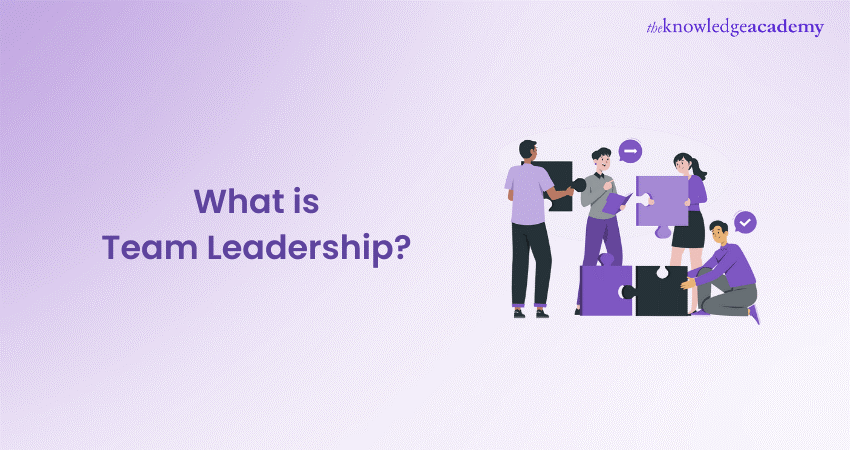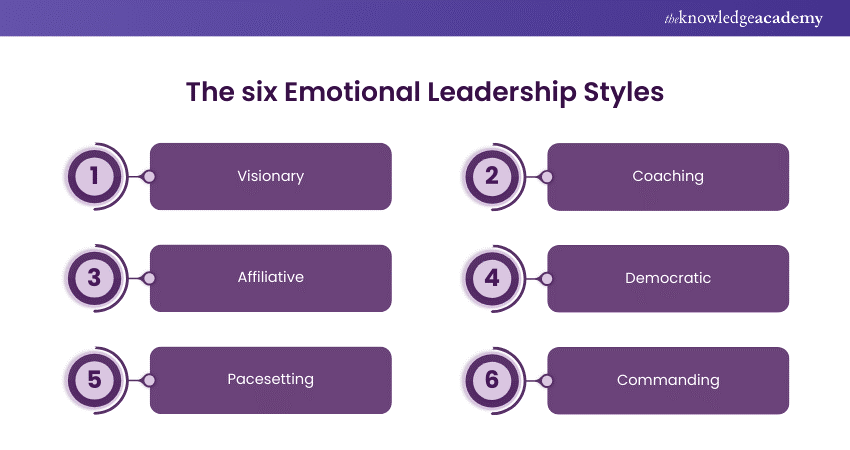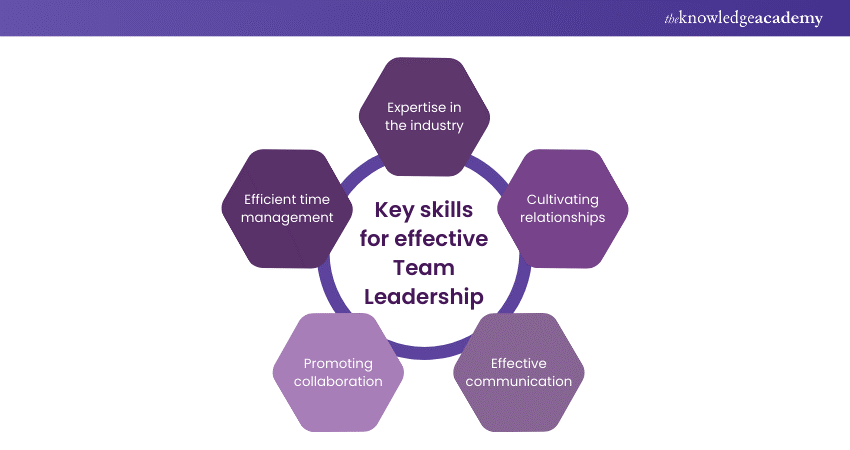We may not have the course you’re looking for. If you enquire or give us a call on +1 7204454674 and speak to our training experts, we may still be able to help with your training requirements.
Training Outcomes Within Your Budget!
We ensure quality, budget-alignment, and timely delivery by our expert instructors.

In the modern-day organisations, Team Leadership stands as the cornerstone of success. It helps navigate the intricate interplay of individuals towards a common goal. Beyond mere direction, it embodies the art of inspiration, fostering synergy, and harnessing diverse talents into a unified force. Given its importance in organisations, leaders and managers must learn What is Team Leadership?
According to Gartner, only 29% of employees believe that their leaders demonstrate human leadership. This simply means that without proper Team Leadership, organisations may struggle to retain employees.
However, you can eliminate this struggle by learn about this useful approach. Through this blog well delve into What is Team Leadership, its importance, benefits and drawbacks. So, read ahead to learn more!
Table of Contents
1) What is Team Leadership?
2) Importance of Team Leadership
3) Well-known models of Team Leadership
4) Key skills for effective Team Leadership
5) Advantages of Team Leadership
6) Drawbacks of Team Leadership
7) Conclusion
What is Team Leadership?
Team Leadership is a multifaceted concept that encompasses guiding a group of individuals or a team towards a common goal or objective. At its core, this concept involves the ability to inspire, motivate, and coordinate the efforts of team members to achieve collective success.
Unlike traditional forms of Leadership that may focus solely on managing individuals, Team Leadership emphasises the dynamics and interactions within a group. The leader acknowledges that the synergy generated by a cohesive team can far surpass the capabilities of any single individual.
Importance of Team Leadership
Now that you know What is Team Leadership, it is time to understand its vitality for organisational success. Here's why it's crucial:
a) Synergy and collaboration: Leaders cultivate synergy among diverse team members. They leverage their skills and perspectives for innovative solutions and enhanced performance.
b) Motivation and engagement: Skilled leaders inspire and motivate team members. They create a positive environment that boosts morale, productivity, and retention rates.
c) Alignment with organisational goals: Leaders ensure team efforts are aligned with organisational objectives, fostering purpose and direction among members.
d) Adaptability and resilience: Effective Leadership enables teams to navigate change, overcome obstacles, and thrive amidst challenges, fostering resilience and adaptability.
e) Conflict resolution and problem-solving: Leaders facilitate constructive conflict resolution and problem-solving, fostering collaboration and trust among team members.
f) Talent development and succession planning: Leaders develop and mentor team members, nurturing talent and ensuring continuity through effective succession planning.
Improve your Leadership qualities with our Leadership Skills Course - join today!
Well-known models of Team Leadership
Understanding various models of Team Leadership provides valuable insights into effective Leadership practices. Here's an expanded view of each model:

1) McGregor's XY Theory
McGregor's Theory X assumes employees are inherently lazy and need supervision, while Theory Y suggests they are self-motivated and can work autonomously. Leaders who embrace Theory Y empower their teams, fostering autonomy and trust. While Theory X leaders may micromanage, hindering innovation and morale.
2) Situational Leadership
This model emphasises adapting Leadership Styles based on the readiness or maturity level of followers. Leaders adjust their approach to match individual team members' needs, providing direction and support when necessary and delegating more autonomy as competence grows.
3) The six Emotional Leadership Styles
Based on Emotional Intelligence, this model identifies six Leadership styles, including the following:
Each style has unique characteristics and is effective in different situations. Visionary leaders inspire a shared vision, while coaching leaders focus on individual development. Affiliative leaders prioritise relationships, while democratic leaders foster collaboration. Pacesetting leaders set high standards, while commanding leaders provide clear directions.
4) Action Centered Leadership (ACL) or the 'Three Circles Model'
This model emphasises achieving tasks, building and maintaining the team, and developing individual team members simultaneously. Effective Leadership involves balancing these three components to ensure task accomplishment while nurturing team cohesion and individual growth.
5) The Leadership Challenges
This model focuses on the various challenges faced by leaders, including managing change, fostering innovation, building effective teams, and maintaining morale during difficult times. Overcoming these challenges is essential for effective Team Leadership and organisational success. Leaders must navigate complexities, inspire confidence, and foster resilience to lead their teams through adversity.
Key skills for effective Team Leadership
The following are some key skills every team leader must possess:

1) Expertise in the industry
Leaders who have in-depth knowledge of the industry allow them to make well-informed decisions. They tend to offer transforming suggestions and guide their crew with added esteem and competence. Looking deep into business trends, best practices and challenges enables leaders with foresight to spot changes, find chances ahead, and lead the teams of their organisations to success.
This expertise incubates respect and trust among team members as leaders show proficiency in terms of working and awareness of the field. This trust is a precondition for good relationships, smooth communication, and collaborative culture in the workplace.
2) Cultivating relationships
Creating solid connections within the team develops trust, respect and cooperation that, in turn, act as the basis for a coherent, integrated and powerful team. Leadership at this level requires time and commitment to understanding team members personally.
Such practice creates a safe and welcoming environment where employees feel involved and respected. The best leaders understand the value of networking and mentorship in the establishment and nurturing of partnerships, procurement and utilisation of resources and overall success of the organisation.
A leader's approach to building relationships helps mentor and develop team members by providing the details of professional growth, guidance and feedback. Helping create a mentorship culture and collaboration will ensure that employees can achieve their best and contribute individually to the team's success.
Improve your organisational efficiency through our Successful People Management and Team Leadership Course - register now!
3) Effective communication
Transparent and clear communication creates dialogue, uniformity, and mutual understanding among the group members. Leaders who can communicate with certainty and precision reduce any misconceptions regarding objectives, results, and responsibilities, aligning everyone to ensure higher productivity.
Leaders that are open in their communication, authentic, and honest usually accord authority and trust from their team members. Through encouraging constructive criticism and appreciating accomplishments, leaders give individuals the opportunity and chance to step up their best performance, which in turn creates sustainable growth and continuous development.
4) Promoting collaboration
Collaboration triggers creativity, unity, and group ideas for finding solutions within the group. Leaders who have collaborative-oriented agendas develop an environment where team members are motivated to share ideas, learn from one another's strengths, and work in unison to reach set targets.
Leaders who foster team members' collaboration prompt equal voices and stand for all, which enriches the outcome of the decisions made with more creativity and effectiveness. The most valuable aspect of successful collaboration can be summed up as the building of trust, respect, and camaraderie.
5) Efficient time management
Leaders who prioritise Time Management set clear priorities, allocate resources effectively, and optimise workflows to maximise productivity and minimise wasted time. By establishing realistic timelines and deadlines, leaders ensure that tasks are completed efficiently. They can enable the team to meet its objectives and deliver results consistently.
Through effective time management, leaders can successfully combine multiple conflicting tasks and responsibilities. With such leaders, time is well managed since the strategic priorities get as much attention as team development, as well as stakeholder engagement, and still include the urgent operational issues with an equal measure of diligence and focus.
Efficient time management fosters a culture of accountability and responsibility within the team. When leaders model disciplined time management practices, they set a positive example for team members, encouraging them to prioritise tasks, manage their workload effectively, and meet deadlines consistently.
Advantages of Team Leadership
The following are some advantages of adopting the Team Leadership approach:
a) Diverse perspectives: This approach brings together diverse backgrounds and expertise, enabling comprehensive problem-solving and innovative strategies.
b) Collective intelligence: By leveraging varied skills and knowledge, teams can tap into collective intelligence, resulting in more informed and robust decisions.
c) Shared accountability: Distributed accountability fosters ownership and collaboration among team members towards common goals.
d) Enhanced communication: Open communication ensures alignment and reduces misunderstandings, promoting coordination and collaboration.
e) Risk mitigation: Comprehensive risk assessment and contingency planning enable teams to anticipate challenges and adapt swiftly to change.
f) Flexibility and adaptability: Diverse skills allow teams to pivot quickly and explore new opportunities, ensuring organisational agility.
g) Succession planning: Teams groom future leaders, ensuring continuity and stability within the organisation.
Drawbacks of Team Leadership
Apart from the above-mentioned advantages, Team Leadership comes with a set of disadvantages that are as follows:
a) Decision-making complexity: Consensus-building in teams can be time-consuming. This can slow down responsiveness and agility, which are crucial in fast-paced environments.
b) Potential for conflicts: With multiple leaders, conflicts of interest or power struggles may arise, disrupting teamwork morale and hindering progress towards goals.
c) Lack of role clarity: Ambiguity in responsibilities among team members can lead to inefficiencies, as tasks may be duplicated or left unaddressed due to unclear ownership.
d) Difficulty in alignment: Diverse perspectives within the team may make it challenging to achieve consensus or cohesive decision-making. This can lead to delays or disjointed strategies.
e) Slow decision-making: Teams may face delays in decision-making due to the need for extensive discussions or negotiations to accommodate diverse viewpoints. This can impact the organisation's ability to seize opportunities promptly.
f) Erosion of accountability: Shared accountability within teams may lead to the distribution of responsibility, where individuals are less motivated to take ownership of outcomes or initiatives.
g) Potential for groupthink: In cohesive Team Leadership, there's a risk of groupthink, where dissenting opinions are suppressed in favour of consensus. This can stifle creativity, innovation, and critical thinking, leading to suboptimal decisions or missed opportunities for improvement.
Conclusion
We hope that after reading this blog, you have got an idea of “What is Team Leadership?” It requires navigating complexities, fostering collaboration, and mitigating challenges to maximise its impact. By proactively managing decision-making processes, resolving conflicts, and fostering accountability and innovation, organisations can leverage the strengths of Leadership teams while minimising their limitations.
Learn how to make decisions as a leader with our Decision Making Skills Training - join now!
Frequently Asked Questions

Team Leadership involves guiding and coordinating a group towards a common goal, fostering collaboration, synergy, and collective problem-solving for organisational success.

Team Leadership involves guiding and coordinating a group towards a common goal, fostering collaboration, synergy, and collective problem-solving for organisational success.

The Knowledge Academy takes global learning to new heights, offering over 30,000 online courses across 490+ locations in 220 countries. This expansive reach ensures accessibility and convenience for learners worldwide.
Alongside our diverse Online Course Catalogue, encompassing 17 major categories, we go the extra mile by providing a plethora of free educational Online Resources like News updates, Blogs, videos, webinars, and interview questions. Tailoring learning experiences further, professionals can maximise value with customisable Course Bundles of TKA.

The Knowledge Academy’s Knowledge Pass, a prepaid voucher, adds another layer of flexibility, allowing course bookings over a 12-month period. Join us on a journey where education knows no bounds.

The Knowledge Academy offers various Leadership Courses, including Leadership Skills Course, Agile Leadership Training and Instructional Design Training. These courses cater to different skill levels, providing comprehensive insights into Delegation Skills for Effective Leadership.
Our Business Skills Blogs covers a range of topics offering valuable resources, best practices, and industry insights. Whether you are a beginner or looking to advance your skills, The Knowledge Academy's diverse courses and informative blogs have you covered.
Upcoming Business Skills Resources Batches & Dates
Date
 Leadership Skills Training
Leadership Skills Training
Fri 28th Jun 2024
Fri 30th Aug 2024
Fri 25th Oct 2024
Fri 13th Dec 2024







 Top Rated Course
Top Rated Course



 If you wish to make any changes to your course, please
If you wish to make any changes to your course, please


